Creation Corner
Genesis 1-11: a scientific apologetic
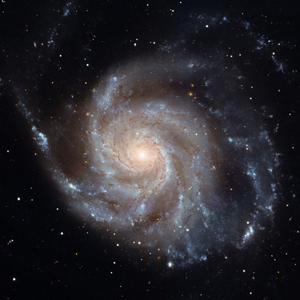
For centuries, beginning with Leonardo da Vinci, scientists accepted the account in Genesis chapters 1-11 as almost self-evident. As a result, they made few efforts to validate it. (Athanasius Kircher, who wrote a scholarly treatment of the voyage of Noah’s Ark, was one notable exception.) As a further result, those who doubted the Genesis account could easily persuade people not to believe it. But since 1960, many creation scientists have sought to show not only that those eleven chapters of Genesis happened as Moses wrote them down, but how they might have happened. Today, a careful scholar can read those chapters and imagine at least one, and often several, ways their story might have played out.
Genesis 1-11: where the models came from
Science almost never “settles.” Different scientists build different models of the world, usually to describe how they think it works. (Operational science tells us how things work. Origins science tells us where they came from.) The more questions a model can answer, and the fewer new questions the model raises, the better. Models often compete with one another, especially in areas of science where people have few chances to observe. And nowhere is this more true than in origins science – for we simply can’t go back in time and watch something that will never happen again.
Genesis chapters 1-11 have three stories that would seem bizarre in any other context:
- The creation of the world.
- The Global Flood.
- The scattering of the nations from Babel.
Of the three, few have tried to model the last. But many have tried to model the first two. They include:
- John Hartnett
- D. Russell Humphreys
- Walter T. Brown (home page)
- Carl Baugh (home page)
- John Baumgardner and his colleagues
Some of the models these men have built can complement one another. Others starkly disagree, and those disputes will prove hard to settle.
Evidence, direct and circumstantial
One settles scientific disputes the same way one settles legal issues: with evidence. Courts take direct evidence (someone tells the court what he saw) and circumstantial evidence (someone finds a sign that someone was at the wrong place at the wrong time). Origins science is like a criminal investigation, and its disputes need something close to a criminal trial to settle. Scientific observations here are like circumstantial evidence. For direct evidence, one needs a historical record one can trust. Those who investigate creation have the Bible. But critics often say the Bible tells a symbolic story. To answer them, and interpret its testimony, one must translate its words accurately. At least one worker, Pam Elder, takes that task very seriously, with a view to understanding exactly what Adam and Moses were trying to say.
This will be the most likely narrative of the Genesis events, from the models most likely to succeed.
Creation Week

A typical spiral galaxy. The Copernican universe should have equal numbers of clockwise and counterclockwise spirals. The real universe does not. Photo: NASA/ESA
Any models of creation must say how the universe, the earth, and life came to exist, in six days, and not more than six thousand years ago (give or take two hundred). That is what Genesis tells us. Humphreys and Hartnett each have a relevant theory on how the universe began. Brown and Baugh have tended to concentrate on how the earth began.
Genesis 1:3 says:
And God said, “Let there be light!” And there was light.
Or from the original Hebrew, God said that light will come to be, and light did come to be. Hebrew does not normally use forms of the verb to be except to convey that something didn’t exist before, and now does.
Picture atomic nuclei, and electrons, all coming to be at once, but in the very hot state called plasma (a Greek word meaning “a thing one can mold”). Now picture those electrons falling into their places – the “ground state.” When electrons fall into ground state, they give off light. (Remember: energy can neither be created nor destroyed.) At first, this light was the same visible light we all use. Then on Day Four, the universe stretched out. (Many verses in Psalms, Isaiah, and other books speak of this.) That stretching cooled the light from visible to microwave – the Cosmic Microwave Background.
Genesis also speaks of an expanse, like a sheet of beaten metal, separating waters (plural) above from waters (plural) below. That might be Carl Baugh’s metallic-hydrogen canopy. Above and beyond that, the stars would form. Below that, the waters (actually in dual number, a construct unique to Hebrew) would divide themselves yet again: into a shallow ocean above the earth’s crust, and another ocean, below the earth’s crust, and about three-quarters of a mile deep. The crust itself, according to Brown, was ten miles thick.
This crust settled in some spots, and bulged up in others. As a result, the crust rested on pillars and held all the dry land, in one super-continent, with shallow seas.
The Global Flood
What triggered the Genesis Flood? Perhaps with Man’s fall, God withdrew from maintaining the earth. And the crust heaved up and down with every orbit of the Moon – not enough for pre-Flood man to notice, but enough to heat the water beneath it to make it supercritical. A supercritical fluid is hot as dry steam, but under enough pressure to keep it liquid. So it is actually a liquid and a gas, dissolved in one another, so that no dividing plane exists between the two.
Would God have made the earth, in effect, a ticking time bomb? Not likely. More likely some person, or persons, whose names even the Bible does not record, set off an explosion – a powerful one – over one of the pillars. It cracked, and put the crust under stress. And that stress would only build.
(We do not know how high pre-Flood man advanced. Possibly he advanced as far as we are advanced today, and further. He would not have nuclear explosives – radioactivity didn’t exist then. But he probably had high explosives, higher than we have, by strictly chemical methods.)
Then, on an autumn day, with the moon two days past full, the crust cracked.
In two minutes the crack ran all the way around the world. We see it today as the Mid-Oceanic Ridge system. The Mid-Atlantic Ridge, the most prominent part of this system, follows a curve that mirrors Europe and Africa to the east, and North and South America to the west. And diametrically opposite the geometric center of the Ridge, is the geometric center of the Pacific Basin. Near there: the Marianas Trench, and the Challenger Depth, the deepest part of the modern ocean.
[ezadsense midpost]
The supercritical water rushed out of the crack in a hypersonic jet. It eroded the edges of the crack for a distance of 800 miles to east and west. Beneath it, the floor of the old subcrustal ocean bulged up. The Americas slid to the west, and the rest of the land mass slid to the east. These land masses at first had water to lubricate them as they moved. When this dried up, the land masses crashed into the old floor and wrinkled up. And so the Rocky, Sierra Madre, Andes, and Appalachian mountain chains formed in the Americas, and the Ural, Alpine, Appenine, and other chains in Europe, Asia, and Africa. The Himalayan chain is unique: three land masses, or hydroplates, crashed into one another to raise up that chain. So the Flood did not cover Mount Everest. Everest and her sister peaks did not rise up until after the Genesis Flood had already lasted for 150 days.
And that Flood created the largest collection of mud ever seen. Some of that mud, and water, and rock, flew into space on the hypersonic jet. Brown estimates that one percent of the earth’s mass might have escaped that way. This is the total mass of the known asteroids and comets. (Brown does not suggest that the Kuiper Belt was part of this escaped mass.)
The rest of the mud became the strata and sediments of the “geological column.” All that mud and rock would sort itself in order, from the most lightweight to the most heavyweight. This is the secret of the fossil record. What we see is not a record of billions of years of life and death, but one disaster with billions of casualties.
But what about radioactivity in the rocks? The violent breakup of the first super-continent, and the movement of the land masses, would have provoked earthquakes of magnitude 10 to 12 on the scales we use today. The ancient crust, then as now, held quartz. When you deform quartz, either by stretching or by squeezing, you create an electric current, and an electric potential, which we measure in “volts.” Enough volts can strip atoms of their electrons. Result: plasma. And plasma nuclei can fuse. This is how we make certain radioactive elements today. And this process probably created the heavier-than-lead elements we can mine today.
It would also have liberated a sea of neutrons that would have pervaded everything. The water would have absorbed them, and that protected Noah and his crew and specimens. This is where heavy water came from. It is also why comets hold a greater proportion of heavy water than we see in the oceans of earth – for most of the heavy water would be in the hypersonic jet that shot up into space.
The Tower of Babel
The Babel Incident is most difficult to understand. The text of the first half of Genesis 11 seems simple enough. Humans had one language, and one vocabulary. And a tyrant – maybe the one Genesis 10 called Nimrod – ordered people to build a city, and a tower that could somehow reach heaven. This tyrant wouldn’t have tried to breach heaven physically, but maybe with some invention now lost to us. Of course God would not allow that. Exactly how He intervened, no one has tried to model. But the result we have today: groups of people migrating away from the gathering point, each looking for food or a place to grow it. Inevitably people’s languages would split, and split again.
But in every language we speak, are the roots of a language humans spoke thousands of years ago. That language is likely either Hebrew or something more ancient still, something we can call “Old High Hebrew” for lack of a better name.
Summary
Genesis 1-11 describes the world as God made it, and how it changed. Will it change back? Isaiah suggests God will bring back that old world. John the Apostle suggests that will last a thousand years. After that, God will re-shape the world yet again, into something we can’t imagine, that will last forever. Until then, all we can do is wait.
[ezadsense leadout]
Terry A. Hurlbut has been a student of politics, philosophy, and science for more than 35 years. He is a graduate of Yale College and has served as a physician-level laboratory administrator in a 250-bed community hospital. He also is a serious student of the Bible, is conversant in its two primary original languages, and has followed the creation-science movement closely since 1993.
-

 Education4 days ago
Education4 days ago‘Grading for Equity’: Promoting Students by Banning Grades of Zero and Leaving No Class Cut-Ups Behind
-

 Education2 days ago
Education2 days agoCHAPTER 11: Critical Race Theory: A Species of the Ideological Thought Genus Marxism
Space Is No Longer the Final Frontier—Reality Is [forthcoming release May 2024] -
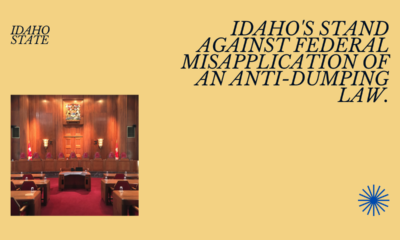
 Family4 days ago
Family4 days agoIdaho defends against abortion mandate
-

 Constitution3 days ago
Constitution3 days agoPresidential immunity question goes to SCOTUS
-

 Civilization1 day ago
Civilization1 day agoWill Trump flip New York?
-

 Civilization19 hours ago
Civilization19 hours agoCHAPTER 12: Seeding Race Wars
Space Is No Longer the Final Frontier—Reality Is [forthcoming release May 2024] -

 Clergy2 days ago
Clergy2 days agoHistorical Points Have Their Place, But That Is Not Where Your Faith Is To Stand!
-
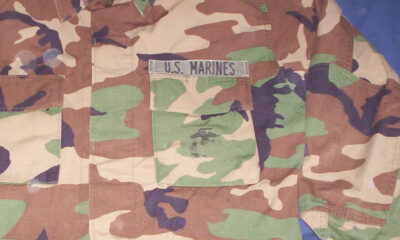
 Civilization4 days ago
Civilization4 days agoMarine Corps Force Design: In Defense of Chowder II



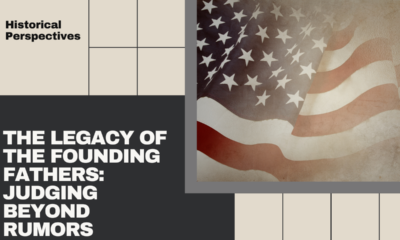







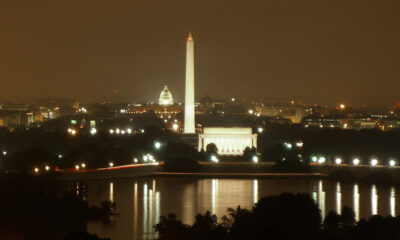



[…] Reprinted from Conservative News and Views […]
Ricardo Ferreira de Oliveira liked this on Facebook.